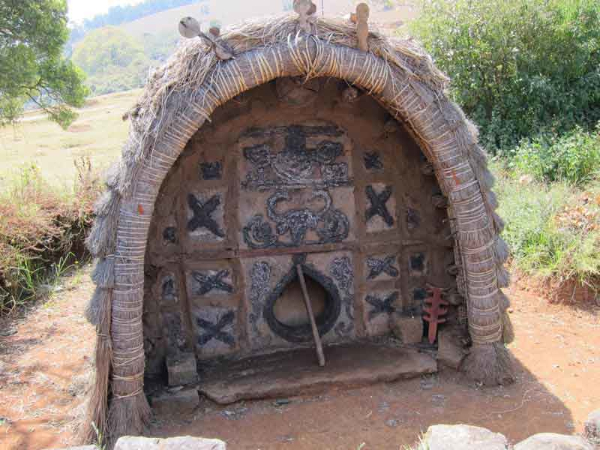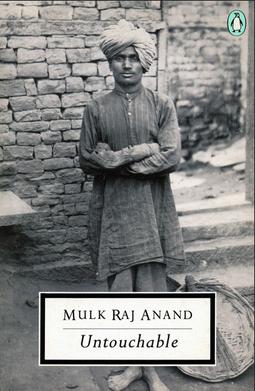Kondagaon Dance Competition 2004 from Asian Ethnology on Vimeo.
Editors’ Note
Frank J. Korom (Boston University) & Benjamin Dorman (Nanzan Institute for Religion and Culture), 28 September 2014, Nagoya, Japan This year we bring you a special double issue dedicated to the study of tribal culture in India. Some of our readers might wonder why we took the decision to publish two special issues on Indian tribal culture successively. The reasons for the decision are complicated and many, but suffice it to say that we chose to do so in good faith. The study of Indian tribal culture thrived during the colonial era, but was curtailed after Independence, since officials deemed it a sensitive issue. In recent years, however, some remarkable work has appeared (mostly in Europe but also in North America) on South Asian tribal culture. | Read the full article >>
Source: 4351
Address: https://nirc.nanzan-u.ac.jp/nfile/4351
Date Visited: Wed Aug 30 2017 16:09:52 GMT+0200 (CEST)
- KOROM, FRANK J., AND BENJAMIN DORMAN
Editors’ Note Vol 73:1-2 2014
- WOLF, RICHARD K., AND FRANK HEIDEMANN
Guest Editors’ Introduction: Indigeneity, Performance, and the State in South Asia and Beyond [1–18] Vol 73:1-2 2014
- BERGER, PETER
Dimensions of Indigeneity in Highland Odisha, India [19–37] Vol 73:1-2 2014
- COELHO, GAIL
Placing Indigeneity: Betta Kurumba Narratives of Territory and Clan Structure [39–60] Vol 73:1-2 2014
- WOLF, RICHARD K.
Tribal and Modern Voices in South Indian Kota Society [61–89] Vol 73:1-2 2014
- HEIDEMANN, FRANK
Objectification and Social Aesthetics: Memoranda and the Celebration of “Badaga Day” [91–109] Vol 73:1-2 2014
- DEMMER, ULRICH
The Poetics and Politics of Practical Reason: Indigenous Identity, Ritual Discourse, and the Postcolonial State in the Northern Nilgiris (South India) [111–137] Vol 73:1-2 2014
- BIRD-DAVID, NURIT
The Social Life of an Ethnonym: The “Kattu Nayaka” of South India [139–153] Vol 73:1-2 2014
- SCHULTE-DROESCH, LEA
Fertility or Indigeneity? Two Versions of the Santal Flower Festival [155–180] Vol 73:1-2 2014
- SCHLEITER, MARKUS
VCD Crossovers: Cultural Practice, Ideas of Belonging, and Santali Popular Movies [181–200] Vol 73:1-2 2014
- PRÉVÔT, NICOLAS
The “Bison Horn” Muria: Making it “More Tribal” for a Folk Dance Competition in Bastar, Chhattisgarh [201–231]. View videos of Kondagoan Dance Competition 2004 and Kondagoan Dance Competition 2011. Vol 73:1-2 2014
- SCHNEPEL, BURKHARD
Contact Zone: Ethnohistorical Notes on the Relationship between Kings and Tribes in Middle India [233–257] Vol 73:1-2 2014
- PFEFFER, GEORG
Ethnographies of States and Tribes in Highland Odisha [259–279] Vol 73:1-2 2014
- HOCKINGS, PAUL
Afterword [281–291] Vol 73:1-2 2014
- SHANKMAN, PAUL
Review of: Kent Flannery and Joyce Marcus, The Creation of Inequality: How Our Prehistoric Ancestors Set the Stage for Monarchy, Slavery, and Empire [293–295] Vol 73:1-2 2014
- SHAY, ANTHONY
Review of: Sam Gill, Dancing Culture Religion [295–299] Vol 73:1-2 2014
- LEONARD, KAREN
Review of: Laura Hirvi, Identities in Practice: A Trans-Atlantic Ethnography of Sikh Immigrants in Finland and in California[299–301] Vol 73:1-2 2014
- SUMITS, WILLIAM
Review of: John Baily, Songs from Kabul: The Spiritual Music of Ustad Amir Mohammad [302–304] Vol 73:1-2 2014
- STOCK, JONATHAN P. J.
Review of: Beth Szczepanski, The Instrumental Music of Wutaishan’s Buddhist Monasteries: Social and Ritual Contexts[304–307] Vol 73:1-2 2014
- JINBA, TENZIN
Review of: Emily Chao, Lijiang Stories: Shamans, Taxi Drivers, and Runaway Brides in Reform-Era China [307–309] Vol 73:1-2 2014
- RINEHART, ROBIN
Review of: Anne Murphy, The Materiality of the Past: History and Representation in Sikh Tradition [309–311] Vol 73:1-2 2014
- GAMBURD, MICHELE RUTH [*]
Review of: Akhil Gupta, Red Tape: Bureaucracy, Structural Violence, and Poverty in India [312–313] Vol 73:1-2 2014
- SHODHAN, AMRITA
Review of: Teena Purohit, The Aga Khan Case: Religion and Identity in Colonial India [314–317] Vol 73:1-2 2014
- TSCHACHER, TORSTEN
Review of: Jeanne Hein and V. S. Rajam, The Earliest Missionary Grammar of Tamil: Fr. Henriques’ Arte da Lingua Malabar: Translation, History and Analysis [321–323] Vol 73:1-2 2014
- GHOSH, PIKA
Review of: Amitabh SenGupta, Scroll Paintings of Bengal: Art in the Village [321–323] Vol 73:1-2 2014
- DAVIS, CORALYNN V.
Review of: Smita Tewari Jassal, Unearthing Gender: Folksongs of North India [324–326] Vol 73:1-2 2014
- MÉTRAUX, DANIEL A.
Review of: Satsuki Kawano, Glenda S. Roberts, and Susan Orpett Long, eds., Capturing Contemporary Japan: Differentiation and Uncertainty [327–330] Vol 73:1-2 2014
- REIDER, NORIKO T.
Review of: Yasui Manami, Shussan kankyō no minzokugaku: “Dai san ji osan kakumei” ni mukete [330–332] Vol 73:1-2 2014
- MORISAWA, TOMOHIRO
Review of: Ian Condry, The Soul of Anime: Collaborative Creativity and Japan’s Media Success Story [333–335] Vol 73:1-2 2014
- AMANO, YUKA
Review of: Peter Haskel, Sword of Zen: Master Takuan and His Writings on Immovable Wisdom and The Sword Tale [335–337] Vol 73:1-2 2014
- CREIGHTON, MILLIE
Review of: Merry White, Coffee Life in Japan [337–339] Vol 73:1-2 2014
- MCKAY, A. C.
Review of: Ian Harper, Development and Public Health in the Himalaya: Reflections on Healing in Contemporary Nepal [340–341] Vol 73:1-2 2014
- JÄHNICHEN, GISA
Review of: Jan-Olof Svantesson, Kàm Ràw (Damrong Tayanin), Kristina Lindell and Håkan Lundström Dictionary of Kammu Yùan Language and Culture [342–345] Vol 73:1-2 2014
- GUPTA, RADHIKA
Review of: Ronit Ricci, Islam Translated: Literature, Conversion, and the Arabic Cosmopolis of South and Southeast Asia [345–347] Vol 73:1-2 2014
- MCGILVRAY, DENNIS B.
Review of: Sharika Thiranagama, In My Mother’s House: Civil War in Sri Lanka [348–349] Vol 73:1-2 2014
- FEENER, R. MICHAEL
Review of: Michele Ruth Gamburd, The Golden Wave: Culture and Politics after Sri Lanka’s Tsunami Disaster [350–352] Vol 73:1-2 2014
- GAMBURD, MICHELE RUTH
Review of: Dhana Hughes, Violence, Torture and Memory in Sri Lanka: Life after Terror, and Gordon Weiss, The Cage: The Fight for Sri Lanka and the Last Days of the Tamil Tigers [352–356] Vol 73:1-2 2014
- THURSTON, TIMOTHY
Review of: Emily T. Yeh, Taming Tibet: Landscape Transformation and the Gift of Chinese Development [356–360] Vol 73:1-2 2014
- MCKAY, A. C.
Review of: Tanya Zivkovic, Death and Reincarnation in Tibetan Buddhism: In-between Bodies [360–362] Vol 73:1-2 2014
- ROCHE, GERALD
Review of: Lauren Meeker, Sounding Out Heritage: Cultural Politics and the Social Practice of Quan Ho Folk Song in Northern Vietnam [362–365] Vol 73:1-2 2014
Source: courtesy Richard K. Wolf (email 27 August 2017), Professor of Music and South Asian Studies, Department of Music, Harvard University, Cambridge, MA

Photo © Ludwig Pesch
Learn more about the Toda community, their cultural traditions and the Nilgiri Biosphere >>
[*] Red Tape: Bureaucracy, Structural Violence, and Poverty in India
Mulk Raj Anand who “became politically active in India’s struggle for independence [and] first gained wide recognition for his novels Untouchable (1935) and Coolie (1936), both of which examined the problems of poverty in Indian society” (https://www.britannica.com/biography/Mulk-Raj-Anand)

People attack me for being a Marxist. I’ll tell you a story. There is a village near Khandala where the caste-families evicted forty Untouchable families who were trying to build a road. The case was put to the Central Government two years ago. One could fight the British, but one can’t fight them, because they are petty bourgeois, they are nothing, and one can’t fight the wind. I have bought two villages, and the Untouchables have moved into them. But I can do nothing to get the petty bureaucracy out. If I lived in England I shouldn’t worry, because there the bureaucracy seems to work. Here it doesn’t, and I protest, and they call me a Marxist.
Source: Mulk Raj Anand quoted by Dom Moraes in Gone Away (London, 1960), p. 23
URL: http://www.worldcat.org/oclc/18773819
Date transcribed: 5 July 2020
Pervasive corruption, one source of the failure of the Indian bureaucracy, systematically disempowers the poor by making essential (and supposedly free) goods and services unaffordable. Siphoned off on their way down through the system, government funds fail to reach their intended beneficiaries, for whom they could make a life or death difference. Concentrated on their way up, bribes grease the wheels. The bureaucracy functions best for those who have political connections, cultural capital, and financial clout. […] Demeaning representations and bureaucratic techniques of governance normalize the malign neglect of the poor. […]
Source: Book review by Michele Ruth Gamburd (Portland State University) of Red Tape: Bureaucracy, Structural Violence, and Poverty in India by Akhil Gupta in Asian Ethnology 73/1–2, 2014, pp. 312-3
URL: https://nirc.nanzan-u.ac.jp/nfile/4372
Date visited: 5 July 2020
Country data – Transparency International
Despite spectacular public mobilisation in 2011, where citizens demanded that the government take action against corruption and advocated for the passage of the comprehensive Jan Lokpal Act, these efforts ultimately fizzled and fell flat, with little to no movement on the ground to build the specialist anti-corruption infrastructure required. […]
Corruption Perceptions Index: 2019 Rank 80/180
Global Corruption Barometer: 63% Percentage of public service users paid a bribe in the previous 12 months
Source: Transparency International
URL: https://www.transparency.org/en/news/asia-pacific-makes-little-to-no-progress-on-anti-corruption & https://www.transparency.org/en/countries/india
Date visited: 5 July 2020
Find publications by reputed authors (incl. Open Access)
Research the above issues with the help of Shodhganga: A reservoir of theses from universities all over India, made available under Open Access >>
Learn more
Accountability | Constitution and Supreme Court | Democracy
Adivasi (Adibasi) | Scheduled Tribes (ST) | Classifications in different states | Tribal Research Institutes
Adverse inclusion | Casteism | Imprisonment | Social conventions
Ambedkar | He who does not lead his life under the direction of others … is a free man
Anthropology | Anthropological Survey of India (AnSI)
Biodiversity | Hyderabad biodiversity pledge
Childhood | Childrens rights: UNICEF India | Safe search
Climate change | United Nations on climate change
Colonial policies | Denotified Tribe vs. “criminal tribe“
eBook | Background guide for education
eBook | Demographic Status of Scheduled Tribe Population of India (Census figures 2011)
Ekalavya and Drona shape collective expectations from a teacher and a student
Fact checking | Figures, census and other statistics
Health and nutrition | Recommendations by the Expert Committee
How many ‘Scheduled Tribes’ are there in India? | Latest list (ST): tribal.nic.in (Govt. of India)
Human Rights Commission (posts) | www.nhrc.nic.in (Government of India)
National Commission for Scheduled Tribes
News update in Indian periodicals: Tribal Affairs
Nomadic and Semi-Nomadic Tribes | SEED – Government scheme